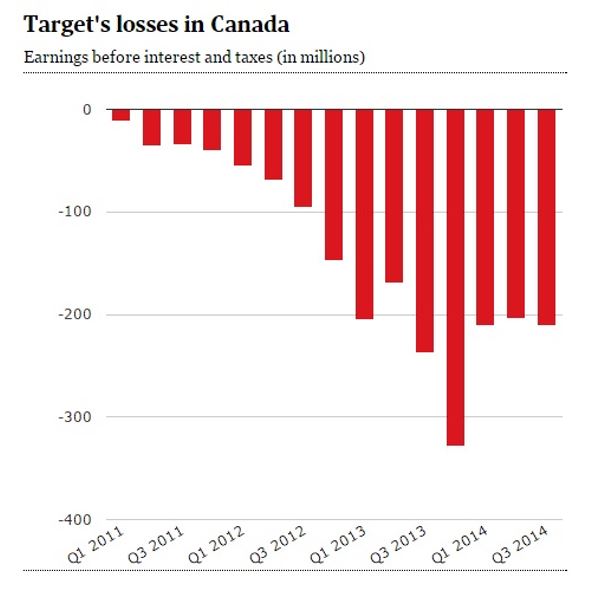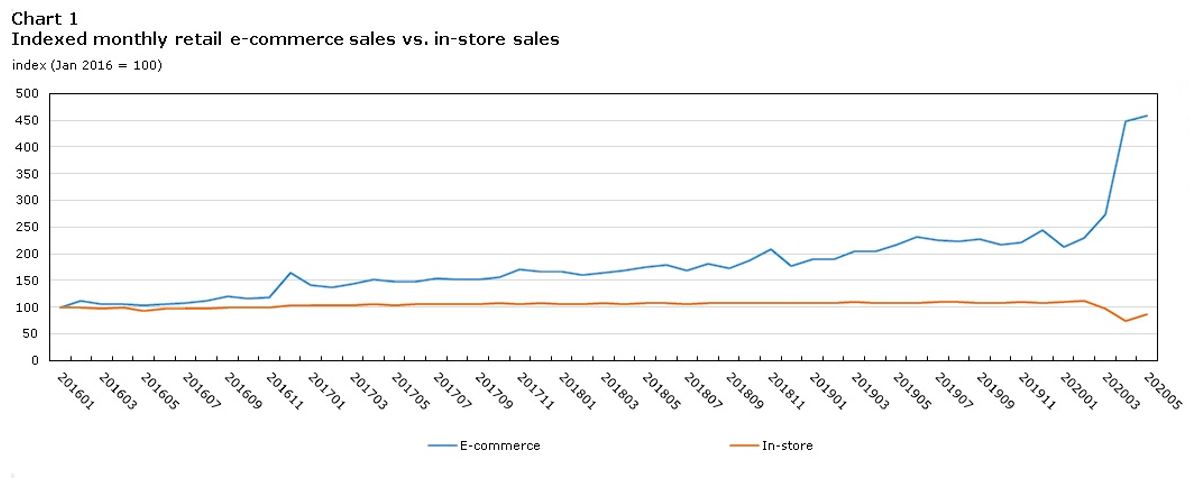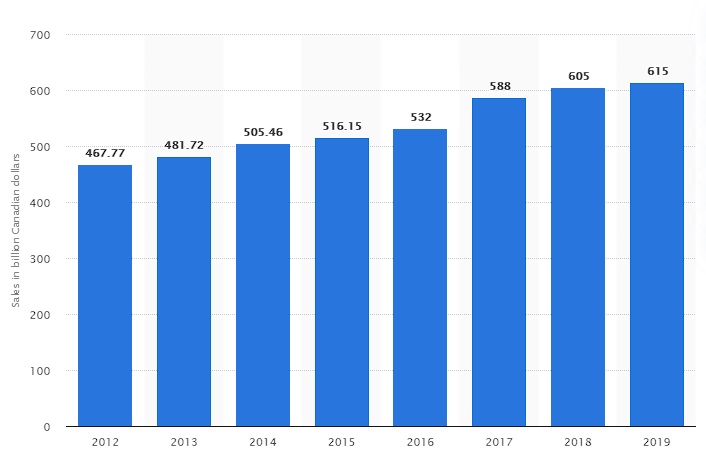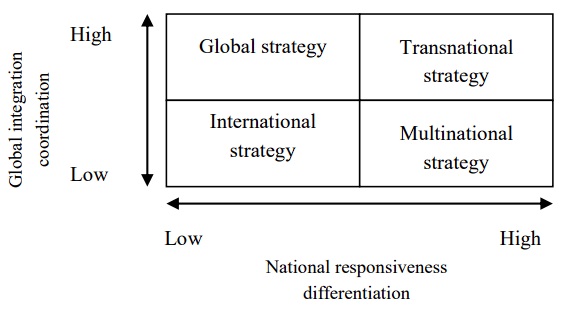Opportunities of Target in Canada
Target already had an experience of opening its network of stores in Canada, yet its venture was not successful due to a variety of problems that need to be discussed separately. The retailer first announced that it was going to enter the Canadian market in 2011, and after securing a lease from the failing company Zellers, it launched its operations in 2013. Yet, despite an ambitious plan, over the total four-year period, the business registered yearly losses, which at the beginning of 2014 reached more than three hundred million dollars.

The main issues faced by Target in Canada were its poor planning and supply chain management, as well as the local laws which caused it to increase its prices. The company instantly opened more than a hundred stores and three distribution centers, yet they were often placed far away from another, which resulted in delays and shortages and negatively impacted customer satisfaction (Megits & Schuster, 2015). Additionally, Canada had different laws, which led to an increase of overheads for Target, for example, the business needed to introduce customized packaging which contained information about product identity both in English and French. Moreover, according to Canadian laws, as a foreign company, Target was prevented from having its own distribution network and had to hire Eleven Points Logistics to manage its distribution channels (Martell et al., 2014). The pricing strategy was another factor that contributed to Target’s failure in Canada since the increased tariffs, packaging expenses, and staff wages made it impossible for the retailer to offer products at the U.S. price level. This, in turn, led to a situation where the Canadian clientele familiar with Target’s prices in the U.S. were disappointed with the company and refused to continue shopping there.
Nevertheless, Target can take into consideration the unfavorable experience in Canada and use it to improve its operations during its second attempt to establish itself there. According to the 2020 index of economic freedom, Canada was considered the best country in terms of economic freedom in the American region (“Canada,” n.d.). Recently, Target invested heavily in its online infrastructure and allowed its customers to order products online. In Canada, retail e-commerce sales have been rising for the past four years and reached four hundred million Canadian dollars in May of 2020 (Fig. 2). Moreover, its retail market had shown steady growth over the past seven years and increased by nearly one hundred billion Canadian dollars since the moment when Target decided to leave the market (Fig. 3). This information shows that Target has potential in the Canadian market since the country’s retail market is still growing.


The growth of Canadian retail, especially in terms of e-commerce, indicates significant changes in market conditions compared to the period when Target first entered the country. The primary market opportunity for Target in Canada concerns its unique approach to delivery. It focuses on providing the clients with options of same-day delivery or store pick-up, which are made possible by its strategy of placing smaller stores in large urban areas. In Canada, there are companies which pursue the same business model, namely Walmart and Amazon, yet they both lack certain features possessed by Target. For example, while Walmart is oriented towards families, Target focuses on a younger audience, which translates into its strategy of selling exclusive products and popular brands (Ell, 2021). Compared to Amazon, Target can deliver goods the same day the order is placed in practically all areas of its operations, not just a limited number of them. Thus, the major opportunities for Target in Canada are an improvement of the retail options existing in the market and functional operations by ensuring faster delivery.
Human Resource Management
The success of Target’s renewed operations in Canada also depends on its strategy concerning human resource management, namely, particular practices which can be different from the ones espoused in the U.S. The hiring process at Target must follow strict rules to ensure that only the most professional candidates are accepted; therefore, the company needs to implement situational and behavioral interviewing. Every person applying for a position has to wish to work at Target, and this desire must be encouraged by the employer with benefits. Training must be performed with the involvement of the best specialists from the U.S. branch of the retailer.
During the initial stages, it is unlikely that Target will find people who are familiar with its customer service. That is why it is essential the Target executives provide the Canadian branch with people with excellent expertise. Reliable retention practices also have to be established, which can be done by providing the employees with benefits and opportunities. One of them is career advancement which is a necessary part of any retail business. Once a worker has demonstrated their professionalism and ability to perform managerial tasks, they have to be promoted and sponsored to undergo additional training. The compensation for the staff of Canadian stores and distribution centers must not only match the level of their American colleagues but also surpass it since the cost of living in Canada is higher than in the U.S. Moreover, the average salary in the U.S. is lower than in Canada, and in retail, it constitutes thirty-six thousand Canadian dollars (“Retail average salary,” n.d.). Such an approach to staff management will help Target achieve success in Canada and become an exemplary employer.
The Integration-Responsive Framework
The Integration-Responsive Framework has earned the status of one of the most effective tools for developing a business expansion model. It proposes four international market strategies at the corporate and subsidiary levels, which take into consideration the factors of integration and local responsiveness (Banerjee et al., 2018). The strategies available to multinational corporations are global, transnational, international, and multinational, or also known as multidomestic. The global strategy implies offering standardized products in all countries of operation with the ultimate objective of reducing costs and maximizing profits. The transnational strategy’s main task is achieving maximum local responsiveness and global integration simultaneously, which allows companies embracing this approach to balance the advantages of global scale and locally adapted goods and operations. The international strategy means that the products are manufactured in the home country and then shipped to clients worldwide, which can be performed even without subsidiaries. Finally, the multinational strategy implies offering locally adapted products without the need for economies of scale and global expertise.

Target needs to consider implementing the transnational strategy since it will grant the company an opportunity to rely on its global experience and at the same time offer products specifically for Canadian customers. It is obvious that Target undergoes continuous improvement in order to stay competitive and increase its market share. This enables the company to innovate and update its operations to deliver better services. The Canadian subsidiary of Target will require the existing expertise in terms of human resource management, supply chain, logistics, and store operations. By ensuring an exchange of experiences and knowledge between its branches, Target will be able to constantly advance its services. Yet, there is also a necessity for a customized approach to the local markets since consumers in Canada, and the U.S. may have different tastes. Moreover, the laws are another factor which has to be considered, for example, Target should not repeat its mistake with hiring an external company to manage the supply chain in Canada. Instead, it has to establish a local subsidiary which will handle the processes.
References
Aston, J., Vipond, O., Virgin, K., & Youssouf, O. (2020). Retail e-commerce and COVID-19: How online shopping opened doors while many were closing.Statistics Canada. Web.
Banerjee, S., Venaik, S., & Brewer, P. (2018). Analysing corporate political activity in MNC subsidiaries through the integration-responsiveness framework. International Business Review, 28(5), 1–18. Web.
Bartlett, C. A., & Ghoshal, S. (2002). Managing across borders: The transnational solution. Harvard Business Review Press.
Canada. (n.d.). 2020 index of economic freedom. Heritage. Web.
Ell, K. (2021). Target is winning the pandemic race. WWD. Web.
Jain, V. (2015). Target Canada’s demise: Where it went wrong. Seeking Alpha. Web.
Martell, A., Ho, S., & Taylor, S. (2014).A computer error kept target from stocking shelves in Canada.Business Insider. Web.
Megits, N., & Schuster, J. (2015). The quality of online social relationships. Journal of Eastern European and Central Asian Research (JEECAR) 2(2), 1–14. Web.
Retail average salary in Canada 2021. (n.d.). Talent. Web.
Statista Research Department. (2021). Sales of retail trade in Canada from 2012 to 2019 (in billion Canadian dollars).Statistics Canada. Web.